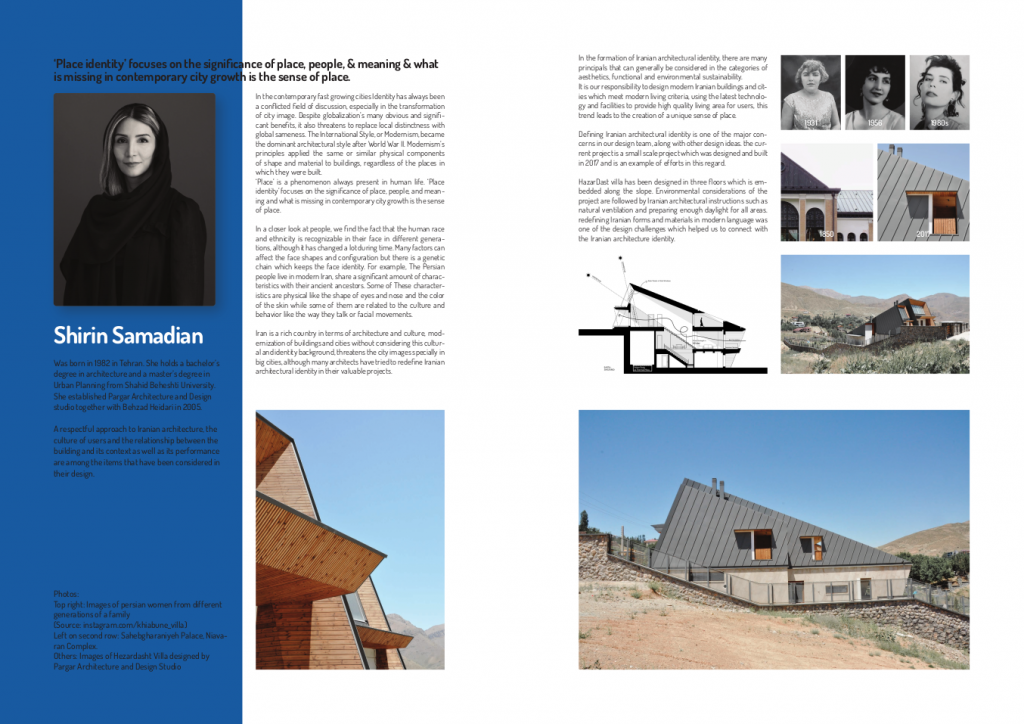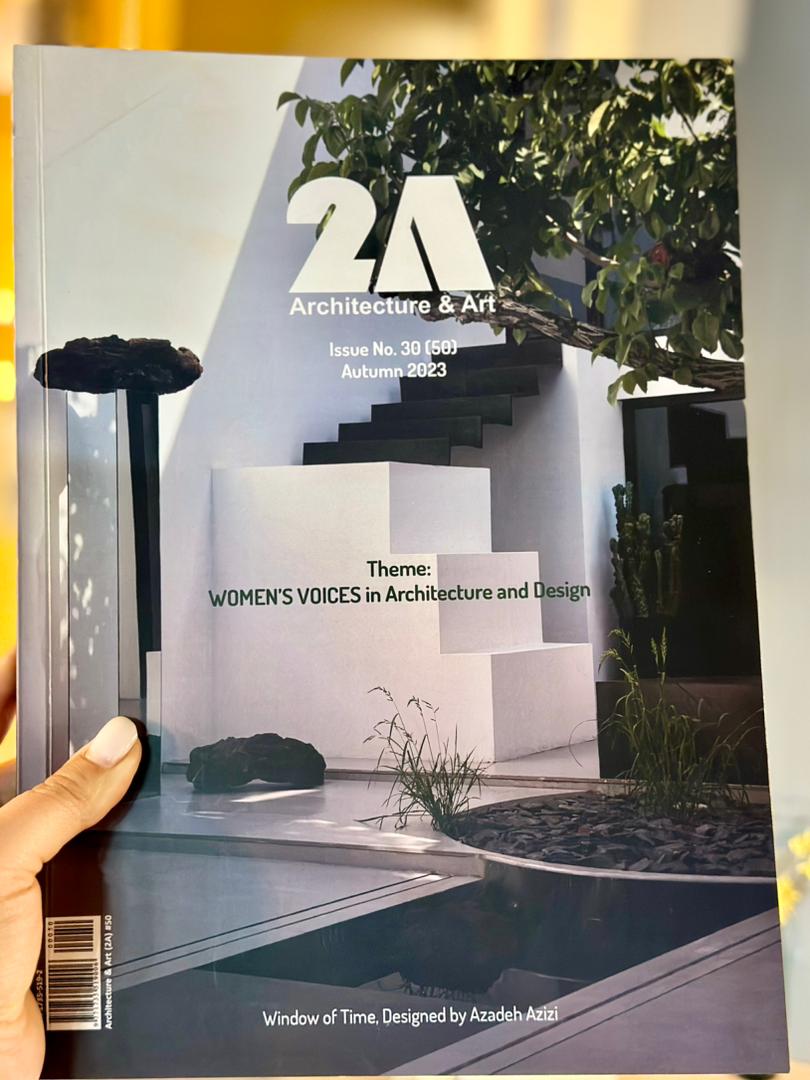The professional contribution of Shirin Samadian which is published in 2A Magazine#50 with the them of “Women’s Voices in Architecture and Design”
Her Biography:
Shirin Samadian
Was born in 1982 in Tehran. She holds a bachelor’s
degree in architecture and a master’s degree in Urban Planning from Shahid Beheshti University.
She established Pargar Architecture and Design
studio together with Behzad Heidari in 2005.
A respectful approach to Iranian architecture, the
culture of users and the relationship between the
building and its context as well as its performance
are among the items that have been considered in
their design.
Photos:
Top right: Images of persian women from different
generations of a family
(Source: instagram.com/khiabune_villa)
Left on the second row: Sahebgharaniyeh Palace, Niavaran Complex.
Others: Images of Hezardasht Villa designed by
Pargar Architecture and Design Studio in the contemporary fast growing cities Identity has always been a conflicted field of discussion, especially in the transformation of the city image.
Despite globalization’s many obvious and significant benefits, it also threatens to replace local distinctness with global sameness.
The International Style, or Modernism, became
the dominant architectural style after World War II.
Modernism’s principles applied the same or similar physical components of shape and material to buildings, regardless of the places in which they were built.
‘Place’ is a phenomenon always present in human life. ‘Place identity’ focuses on the significance of place, people, and meaning and what is missing in contemporary city growth is the sense of place.
In a closer look at people, we find the fact that the human race and ethnicity is recognizable in their face in different generations, although it has changed a lot during time.
Many factors can affect the face shapes and configuration but there is a genetic chain which keeps the face identity.
For example, Persian people live in modern Iran, and share a significant amount of characteristics with their ancient ancestors.
Some of These characteristics are physical like the shape of eyes and nose and the color of the skin while some of them are related to the culture and behavior like the way they talk or facial movements.
Iran is a rich country in terms of architecture and culture, modernization of buildings and cities without considering this cultural and identity background, threatens the city images specially in big cities, although many architects have tried to redefine Iranian architectural identity in their valuable projects.
the formation of Iranian architectural identity, there are many principals that can generally be considered in the categories of aesthetics, functional and environmental sustainability.
It is our responsibility to design modern Iranian buildings and cities which meet modern living criteria, using the latest technology and facilities to provide high quality living area for users, thistrend leads to the creation of a unique sense of place.
Defining Iranian architectural identity is one of the major concerns in our design team, along with other design ideas. the current project is a small scale project which was designed and built in 2017 and is an example of efforts in this regard.
HazarDast villa has been designed in three floors which is embedded along the slope. Environmental considerations of the project are followed by Iranian architectural instructions such as natural ventilation and preparing enough daylight for all areas.
redefining Iranian forms and materials in modern language was one of the design challenges which helped us to connect with the Iranian architecture identity.




Leave a Reply